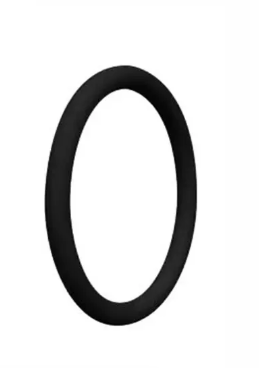PTFE O-rings are designed for media that cannot be used with rubber O-rings. It can withstand various strong acids, strong bases, organic solvents, and corrosive gases. In addition, it can be used under high and low temperatures as well as high vacuum.

The friction coefficient of polytetrafluoroethylene on metal surfaces is much smaller than that of rubber, only 1/10 of the friction coefficient of rubber, and it does not adhere to metal surfaces, making it very suitable for use in situations where low starting friction is required.
However, the elasticity and resilience of polytetrafluoroethylene are far inferior to rubber, so its sealing performance is poor, and it is best to only use static sealing.
At the same time, its thermal conductivity is poor, and when used for sealing, it is easy to cause volume expansion, deformation, and leakage.
PTFE O-rings can be used in the temperature range of -160~250 ℃, but they cannot be used in cases of large temperature fluctuations or rapid heating and cooling due to their high coefficient of expansion and poor thermal conductivity.
When it is necessary to use it at high temperatures, copper powder can be filled in polytetrafluoroethylene, with a maximum filling amount of up to 60%. But the filled O-ring should not be used in mineral acids such as hydrochloric acid and nitric acid. After filling, the density increases, the elasticity decreases, the strength decreases, and the wear is faster.
It is better to use filled PTFE O-rings under high temperature and high pressure than pure PTFE because the deformation is smaller at this time. But for gas sealing, filling with PTFE can easily cause leakage. Therefore, it is not applicable to pneumatic and vacuum systems.
The use pressure of polytetrafluoroethylene as a gas seal should be above 40kgf/cm ², and other sealing rings should be used below this pressure. Polytetrafluoroethylene lacks elasticity, and when the elongation is too large, it will produce significant residual deformation. Therefore, it cannot be installed in grooves with a large elongation like O-rings. Generally speaking, the compression deformation for static sealing is greater than that for dynamic sealing. To increase elasticity, it is allowed to use O-ring grooves.
Post time: Apr-29-2025
